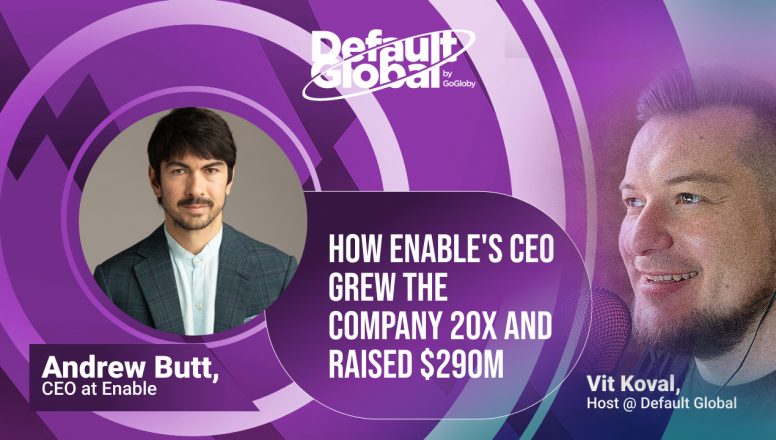Meet Kimberly Bringas, Remote Work Advocate:
Kimberly Bringas has been immersed in the world of remote work for the past eight years, making it her professional home within the tech industry. With over 12 years of experience in the field, she initially joined Olark, her previous company, drawn in by its core values and exceptional leadership. Little did she know that this decision would lead her on a path to becoming an advocate for remote work.
As Kimberly delved deeper into her role, which primarily focused on HR and people processes, she realized the unique challenges and opportunities that come with managing a remote team. During this pre-pandemic era, when remote work practices were still evolving, she recognized the importance of seeking out community and expertise to navigate the uncharted territory. Kimberly learned firsthand the value of openness and a willingness to learn from others in the absence of established best practices.
Today, Kimberly leverages her experience and knowledge to give back to the remote work community.
Listen Up: Kimberly Bringas, Remote Work Advocate:
Watch Now: Kimberly Bringas’ In-Depth Talk with Vit Koval
Quick Read: Kimberly Bringas, Remote Work Advocate, Interview Highlights
Can you share your insights on the best practices for building strategic and diverse teams in a work in a remote work environment?
When asked about the best practices for building teams in a remote work environment, especially for entrepreneurs new to this concept, Kimberly emphasized the significance of establishing a clear North Star. This North Star refers to a dedicated fixed point that guides a company’s core values and mission. It serves as an aspirational goal that aligns the team and keeps the company grounded amidst the ever-changing landscape.
Kimberly explained, “Having that dedicated fixed point that you’re always moving towards knowing you’ll never fully achieve it, but it’s meant to be aspirational does a couple of things.”
This North Star not only helps the company navigate change but also plays a vital role in hiring the right talent. By defining core values and mission, entrepreneurs can attract individuals who align with the company’s vision. Kimberly stressed the importance of offering employees a strong sense of purpose and impact in their work, as it goes beyond just compensation. Candidates, especially in the early stages, are often drawn to the challenge of working for a newer company where they can make a meaningful contribution while believing in the company’s mission.
How can entrepreneurs promote and maintain a healthy culture in remote work settings?
When asked about promoting a healthy culture in remote work settings, Kimberly highlighted the importance of embracing change and understanding that culture evolves over time. She emphasized that what may have worked initially might not serve the company in the long run.
“A healthy culture is really dependent on the fact of welcoming change and understanding it’s going to happen at some point,” she explained.
Kimberly also challenged the common misconception that culture is solely the responsibility of a particular team, such as the people or talent acquisition team. She stressed that cultivating a healthy culture is a collective effort that involves the entire company. However, she went a step further, stating that it is essential to hire leaders who align with the core values and mission of the company. These leaders act as change agents within the organization, guiding others, providing perspective, and ensuring that everyone feels included and valued.
She further emphasized the importance of involving these change agents in important conversations, seeking their feedback, and considering their insights when making strategic decisions. Kimberly underlined that when expanding globally, it becomes crucial to take into account cultural and language barriers that may arise when hiring in new locations. By engaging leaders who are connected to the company’s long-term vision and including them in decision-making processes, the company can strengthen its strategy and navigate these challenges more effectively.
What advice do you have for executives who are in transition to remote for the first time?
Kimberly emphasized the importance of self-reflection and honesty. She encouraged leaders to ask themselves if people management is truly their calling. Managing people requires a distinct skill set that differs from individual contributions. Kimberly illustrated this with the example of tech startups where the founders, who excel in technical expertise, may not possess the necessary managerial skills. In such cases, seeking external expertise, such as executive coaching or hiring experienced leaders, can provide invaluable guidance and support.
Kimberly stressed the significance of having the humility to acknowledge the need for learning and growth in the realm of people management. Coming to terms with the decision to pursue or relinquish leadership responsibilities early on enables entrepreneurs to make informed choices that align with their aspirations. By addressing this fundamental question, leaders can allocate resources effectively, potentially investing in external leaders to optimize team performance and product development.
Another aspect that Kimberly highlighted was the importance of establishing leadership rituals. These rituals, which are a series of actions influencing specific behaviors, serve as powerful tools for fostering desired team dynamics. Kimberly shared her favorite ritual called the “team agreements exercise,” learned from her mediator friend, Mark Baril. This exercise involves co-creating a concise set of behaviors and expectations that the team commits to achieving together. By involving the entire team in this process, leaders create a sense of shared ownership and accountability. These rituals provide a consistent framework for team collaboration and performance, regardless of the team’s size or growth trajectory.
Kimberly stressed the significance of implementing rituals that resonate with the company’s culture and values. By establishing and maintaining these consistent practices, leaders can create a sense of belonging and clarity for team members, enabling them to understand their roles and expectations in different contexts. The team agreements exercise was just one example of the various rituals leaders can implement to reinforce desired behaviors and drive team success.
Can you provide some strategies for effectively implementing an interview feedback loop?
Kimberly acknowledged the common desire for feedback while highlighting the lack of proper training and understanding on how to engage with it effectively. She debunked the notion that a perfect tool or complex approach is the key to successful feedback implementation. Instead, she emphasized the importance of simplicity and consistency in feedback practices, particularly for newer entrepreneurs and growing companies.
The first area Kimberly emphasized was focused one-on-one sessions. She stressed the need for quality feedback sessions held twice a month, beyond the usual status updates. These sessions should delve into project outcomes, individual growth areas, and learning opportunities. By focusing on specific behaviors and their impact, leaders can help team members feel connected to their roles and better understand their contributions. Additionally, these sessions enable leaders to step back from day-to-day operations and gain a broader perspective on their teams.
The second area Kimberly highlighted was team feedback. She emphasized the importance of establishing leadership rituals and setting clear goals and metrics for the team. Rather than turning meetings into mere status updates, leaders should use these sessions to assess progress, recognize achievements, and address challenges. Creating a culture where feedback becomes a natural part of the discussion is crucial. Kimberly emphasized the value of bidirectional feedback, where team members feel comfortable sharing their perspectives and leaders create space for others to contribute to feedback loops. This collaborative approach fosters a healthy feedback culture and empowers teams to experiment and innovate.
How do founders, managers, and executives ensure they’re fostering meaningful relationships among team members despite this physical distance and even potential cultural barriers that they have?
Kimberly emphasized the importance of simplicity and consistency. She advised entrepreneurs and team leaders to prioritize focused one-on-one sessions and team feedback as foundational practices. Individual one-on-one sessions can foster a sense of connection and understanding between leaders and direct reports by dedicating specific time to discuss projects, learnings, growth areas, and progress. This approach allows individuals to perceive the impact of their work and feel more grounded in their roles. Furthermore, it enables leaders to step back from day-to-day operations and focus on the bigger picture. Team feedback, on the other hand, can be facilitated through leadership rituals and regular touchpoints that go beyond mere status updates. By addressing goals, metrics, and key results, leaders can ensure feedback becomes a normal part of the team’s discussions. Encouraging two-way feedback and creating space for experimentation further enhance the feedback culture within the team.
When it comes to fostering connections in distributed teams, Bringas highlighted the significance of leveraging asynchronous practices to optimize synchronous time. As teams span multiple time zones, the window for live communication shrinks. To overcome this challenge, she recommended using tools such as the user manual, which facilitates team members in sharing information about themselves. By having individuals fill out sections containing questions about their quirks, preferred feedback styles, and work preferences, the team can gain insights into each other’s personalities and work dynamics. To deepen connections, Bringas suggested conducting round-robin sessions where team members engage in conversations about specific aspects mentioned in their manuals. This asynchronous preparation before synchronous meetings enables more in-depth discussions and effective use of time.
Additionally, Bringas addressed potential cultural barriers in distributed teams. She stressed the importance of leading with humility and low ego, creating an environment where mistakes are accepted and learning is encouraged. Seeking external global communities and intentionally broadening perspectives can help leaders overcome their own biases and gain insights from diverse cultural backgrounds. Hiring experts or consultants with cross-cultural expertise can also provide valuable guidance. Importantly, when leaders make mistakes, Bringas emphasized the significance of owning up to them and using them as opportunities for cultural understanding and appreciation. By openly discussing mistakes and actively learning from them, teams can strengthen their bonds and foster inclusivity.
Based on your extensive experience in remote work and global hiring, what are the top three things entrepreneurs should be aware of or consider before hiring talent from around the world?
When asked about the top three things entrepreneurs and executives should be aware of before starting to hire talent from around the world, Bringas emphasized the following points:
Firstly, align the global hiring strategy with the company’s specific business needs. It can be tempting to hire globally due to the accessibility and technology-enabled remote work. Still, it is essential to ensure that hiring from a specific country serves a clear purpose. For instance, if a company identifies a significant customer base in a particular country, having local talent can enhance accessibility, and cultural understanding and enrich the user experience for those customers.
Secondly, it is crucial to understand the cost of doing business when hiring globally. Bringas acknowledged the complexity associated with legal and financial implications in cross-border hiring. While more resources and best practices are available today, entrepreneurs and executives must be aware of the hidden costs and time required for compliance. Seeking expert advice from legal firms, financial consultants, or consulting agencies specialized in global hiring can help mitigate risks and navigate these complexities effectively.
Lastly, Bringas stressed the importance of considering the entire employee lifecycle when investing in global talent. It is about bringing people on board and ensuring a holistic approach throughout their journey within the company. The employee lifecycle varies depending on the company’s stage and goals. However, entrepreneurs and executives should consider factors such as succession planning and long-term career growth opportunities for employees. Recognizing that employees may eventually seek new opportunities aligned with their career paths allows for proactive planning and supports a culture of continuous growth and development.
By aligning the global hiring strategy with business needs, understanding the costs and complexities involved, and considering the complete employee lifecycle, entrepreneurs and executives can establish a solid foundation for successful global hiring practices.






